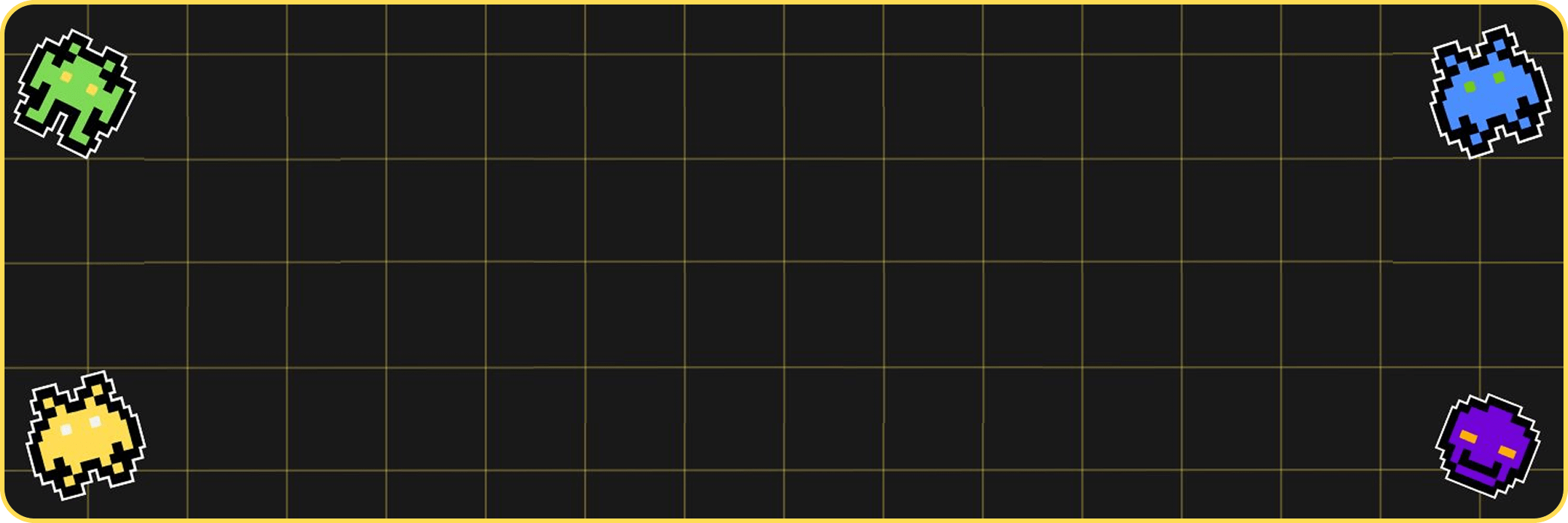Allcorrect’s art department here. Game developers outsource their graphic design to us, from icon sets to concept art. We’d like to talk today about why they do that and how to best structure the process.
Allcorrect’s art department here. Game developers outsource their graphic design to us, from icon sets to concept art. We’d like to talk today about why they do that and how to best structure the process.

The three most common ways of creating art are hiring in-house employees, using freelancers, or outsourcing the project to a professional studio. It’s also possible to obtain pre-made assets, use a neural network, or involve members of the community, but we’re not going to discuss those in this article.
Each option has its benefits and disadvantages:
| In-house | Freelancers | Studios | |
|---|---|---|---|
| Cost | High. In addition to paying employee salaries, there are a number of add-on expenses. Even if the employee's workload is light, you still have to pay them. | Varies. The hourly rate depends on the contractor's experience, place of residence, etc. | High. The hourly rate for a studio will almost always be higher than an in-house employee. |
| Quality | Varies. Depends on the experience and motivation of the employee. | Unpredictable. Even a contractor with an excellent portfolio might not create what you were expecting for your project. | High. Studios have a stake in the quality of the finished product because their reputation depends on it. Quality is guaranteed by the fact that both the artist and the art director are involved in the project. |
| Number of types of work | Low. Each task type requires a separate expert. | Low. Each task type requires a separate freelancer. | High. A studio employs artists with various areas of expertise. |
| Workload scalability and efficiency | Low. The volume of completed work is limited by the productivity of the in-house employee. | Moderate. You can hire the necessary number of contractors, but finding and onboarding them can take time. | High. A studio can handle any volume of work. |
| Responsibility for quality and deadlines | Moderate. Highly depends on the personal characteristics and professionalism of the employee. | Unpredictable. A freelancer may prove to be a super-contractor or may fall off the radar just before the deadline. | High. Deadlines and requirements for the finished product are laid out in the contract. |
| Management costs | Average. The employee is involved in the work, but the company must cover all work-related needs (such as workplace equipment and HR staff). | High. Looking for freelancers, assigning tasks, managing a team and approving the finished product all take a lot of time. | Low. The majority of managerial work is done by the art director or PM on the studio's side. |
| Engagement | High. An employee knows the inner workings of your company better than anyone. | Low. Freelancers might be working on several projects at once, which can reduce their engagement with each one. | Moderate. Before starting work, a studio's employees try to find out as much information as possible about your processes. Still, they can't be as involved as in-house artists. |
| Transparency of work | High. You see everything the employee does (especially if you're physically located in the same office). | Low. You can't control when or how the contractor works on your project. | Moderate. Before the project starts, a pipeline is set up that establishes all the stages of the project that require your involvement. In addition, the studio manager (or if necessary, the art lead and artist) are in constant contact with the client. You receive progress reports for each task. |
As the table shows, outsourcing is convenient when hiring an in-house employee isn’t a viable option (say, when working on a one-time project), or when your in-house team lacks the resources for the project. Plus, you most likely want to receive a finished project of predictable quality while keeping management costs as low as possible.
 Drawing machinery requires a certain set of skills
Drawing machinery requires a certain set of skills
So, how does an outsourcing studio work?
We have our own pool of artists. They may be in-house employees or freelancers we work with on a long-term basis. After taking a look at their portfolio, we give them a test assignment, take a look at their strengths and weaknesses, and make sure they’re reliable. Soft skills, incidentally, are a separate and important point without which it’s impossible to work with them.


Both images depict people, but artists with different skill sets are required to create each one.
There are two main types of clients. The first type doesn’t always know what they want. In these cases, we set up a call with our art director as well as an art lead and project manager from our side. That gives us the opportunity to identify exactly what the client is looking for—the style they like, any existing games they’re modeling theirs after, and more descriptive details like proportions and how cartoonish the characters should look. Walking out of that meeting, we have specifications we can use to find the right artists.
The second type of client has worked with art outsourcers before. They often send us detailed specifications on their own with everything we need to get started. For our part, we provide talent management and make sure all timelines are followed.
The cost depends on how many studio hours it takes to draw all the materials. Once in a while, an artist isn’t able to handle a project. In that case, we send it to someone else. That’s a risk outsourcers take on. It’s also another important aspect of an art director’s job, incidentally: the ability to project how much time a job will take from the get-go. Read more about how project costs are calculated in our article on the topic.
Waypoints are built into the timeline at the start to give the client a chance to pick from a few options or confirm that we’re on the right track. That means we don’t have to waste time redoing work later on.
 The submission deadline for each stage of the project is confirmed in writing
The submission deadline for each stage of the project is confirmed in writing
It’s important to stay in contact throughout the project. Where the client has processes set up, we integrate into them, many inviting us to their Jira, Slack channel, or other messenger/task manager. If they don’t, we add them to our Discord channel.
To summarize, here’s what the outsourcer takes responsibility for:
• Art direction. We make sure the client gets what they need from the artists. That’s especially important for inexperienced developers.
• Contractor evaluation and selection. After a conversation with the client, our art director knows exactly which skill set they need from the artists and how to set up the team best of all.
• Talking to the artists in their own language.
• Setting up internal approval processes.
Small studios working with us can take on larger projects despite limited resources. And when it comes to bigger companies, reaching out to an outsourcing studio gets them art at the quality level they need while spending as little time and effort as possible.
If you still have questions, we’d be happy to answer them!




